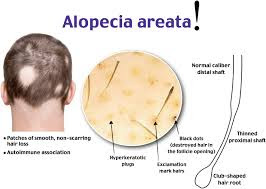DIARRHEA AND AYURVEDA
In Ayurveda it is called as Atisaar. It is a disease of diagestive sytem. It is a very common problem which occurs to any age of life.
In this condition the stool become too watery resulting in dehydration of body. Normally, the condition lasts for 2-3 days and can be managed without medicines. But if it is remains more than 3 days it leads to severe dehydration of body.
If this Diarrhea become untreated the it cause Crohn’s disease, ulcerative colitis, celiac disease, microscopic colitis and irritable bowel syndrome (IBS).
 |
DIARRHEA |
Causes
· Drinking of contamined water
· Eating of contaminated food
· bacteria, viruses or parasites infection
· – Use of some antibiotics which cause diarrhea.
· Lactose intolerance .
Symptoms
· watery motions more than 4 t-5 times
· Abdomianal cramps
· Less urine
· Sometime Bleeding with stools
· Burning in anal region
· Low BP
According to Ayurveda, weak gastric fire, improper food, impure water, toxins and mental stress usually cause atisaar. Aggravatede vata pulls down the fluid part from various tissues of the body and brings it into the intestine. There this fluid mixes with the stool which then leads to loose, watery motions. Depending upon which particular Dosha is vitiated, atisaar has been classified into Vataj, Pittaj, Kaphaj, Sannipatik, Bhayaj and Shokaj types in Ayurveda. Vataj atisaar (caused mainly by vitiated Vayu) is marked by painful loose motions with sounds & foam, gases and cramps. Pittaj atisaar (caused mainly by vitiated Pitta) causes motions with burning sensation at anus, offensive odour and varying colours like green, red, blue. Thirst, giddiness, sweating and fever are often present. Kaphaj atisaar (caused mainly by vitiated Kapha) shows sticky, oily, whitish motions with foul odour, nausea, lazy feeling and excess sleep. Sannipatik atisaar is caused by vitiation of all three Doshas and therefore have mixed characteristics. Bhayaj and Shokaj atisaar are caused by fear and grief respectively.

Kommentare
Kommentar veröffentlichen